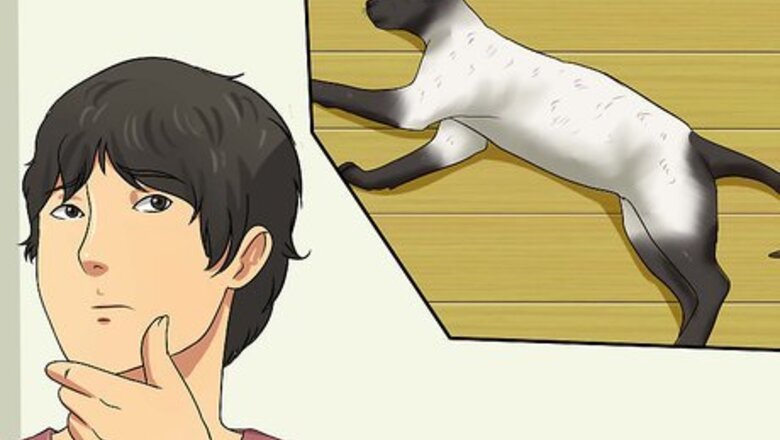
views
Diagnosing Bladder Stones in Cats
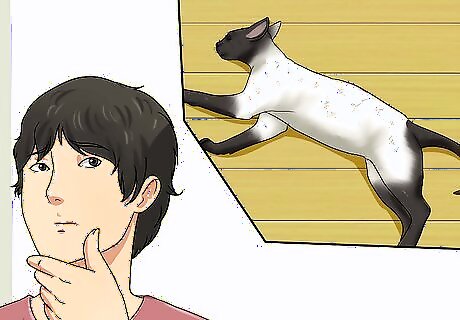
Know your cat's risk. Certain cat breeds, such as Himalayans, have a genetic predisposition toward developing mineral deposits in the bladder. But other factors can cause bladder stones in any breed. A diet high in acidity or calcium, magnesium, or phosphorus may cause mineral buildup. Decreased water consumption may lead to the concentration of minerals in the bladder. A urinary tract infection may lead to bladder stones. Certain medications and supplements, including Lasix, Cortisone, Ascorbic Acid, Tetracycline, and Sulfa drugs, may cause bladder stones when used over prolonged periods of time if the cat has a genetic tendency to do so.
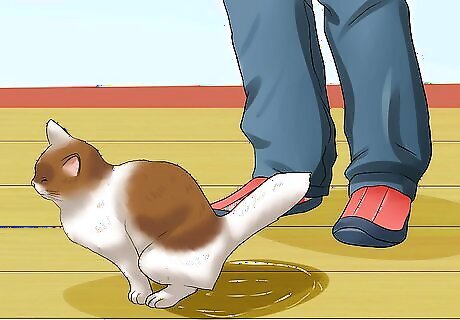
Check for symptoms. It is important to be alert for signs that your cat may have uroliths. Common signs to look for include: Straining or distress when urinating (dysuria) Bloody urine (hematuria) Frequent urination in small quantities Excessive genital licking Urinating in unusual places

Consult with your veterinarian. Your vet will be able to diagnose bladder stones, and may be able to determine how severe the blockage is in your cat. Report any unusual behavior or problems you've noticed in your cat. Your vet may take an X Ray or conduct other tests, such as palpating your cat's abdomen, checking its urine, or taking an ultrasonography test. If the cat has bladder stones, a stone, or group of stones, will be seen in the urinary bladder, or other parts of the urinary system such as the kidney, ureter, or urethra.
Treating Bladder Stones

Act fast. If your cat is suffering from bladder stones, time may be of the essence. Stones have been shown to grow to problematic sizes in as little as two weeks. Bladder stone growth may lead to severe pain, vomiting, and depression. If a blocked ureter is not diagnosed and treated quickly, the blocked kidney may become irreversibly damaged.
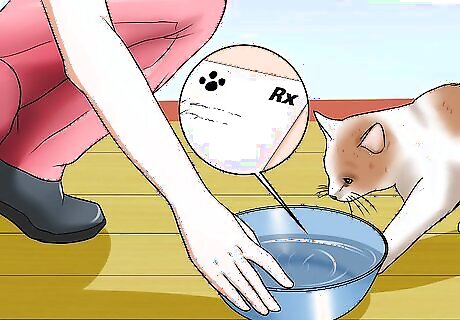
Consider your options. Depending on the severity and location of your cat's bladder stones, your veterinarian may recommend something as simple as a change in diet, or a major surgical procedure. Your vet may prescribe a special diet that will dissolve mineral deposits in your cat and alter its pH to prevent future deposits. Your vet may flush your cat's bladder. This involves the use of a catheter to remove deposits and any residual sediment. Your vet may perform a cystostomy, in which the bladder is surgically opened and the mineral deposits physically removed. Your vet may recommend a perineal urethrotomy, in which the urethra is surgically widened.
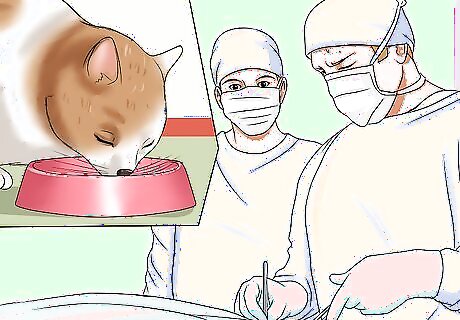
Prepare your cat for surgery. If your veterinarian recommends surgery as the best option to remove a severe bladder stone, there are several steps you may need to take to prepare it for surgery. Have your cat fast before receiving anesthesia. Any time an animal is anesthetized, there is a risk that, if vomiting occurs, it may be inhaled into the lungs. The best way to prevent this is to keep your pet from eating any food prior to the scheduled procedure. Fast times may vary, depending on your cat's age and size, and the specific anesthesia being used on your cat. Consult with your veterinarian to determine how long your cat should fast prior to surgery. Keep your cat hydrated. Unless your vet advises otherwise, you should be able to give your cat water overnight until the morning of the procedure. If your cat requires daily medication, ask your veterinarian whether or not to administer those medications prior to surgery.
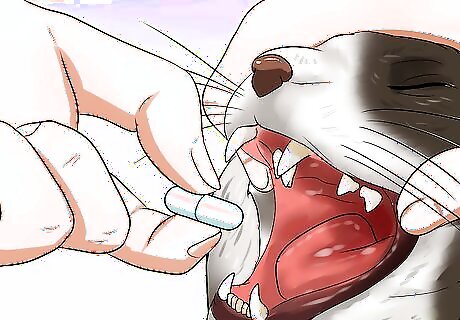
Provide post-surgical care. If your cat has undergone surgery, your vet will provide you with the information you need to care for your cat after its surgery. This will probably include giving your cat medication regularly, and may call for more frequent veterinary check-ups. Your vet may want to send the stones away for analysis in a laboratory. Knowing the precise mineral content of the stones can make it easier to determine the appropriate prevention methods, including prescription medication to prevent the formation of future bladder stones.
Preventing Future Bladder Stones

Change your cat's diet. While animal experts are not completely certain why bladder stones form, they have noticed an increase in one particular type of stone, calcium oxalate, in recent years. There are many different types of mineral stones. The type depends on the minerals from which they are formed. Your veterinarian will send the stone away for analysis and from that recommend a diet low in the minerals from which your cat's stone was built. Choose the diet appropriate for your cat's urolith type. For example, for oxalate stones try a non-acidifying diet diet with low- to moderate-levels of calcium, as well as magnesium and citrate components. This type of diet can help reduce urinary calcium and may prevent buildup of calcium oxalate. Use canned food instead of dry food. The extra water content found in canned cat food may help dilute urine and prevent the buildup of minerals.
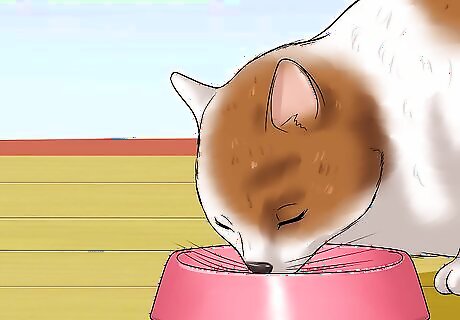
Give your cat plenty of fresh water. Cats generally prefer fresh water, and may not drink water that has been out for several days. Empty and refill your cat's water bowl every day. This will also help you monitor how much water your cat is drinking.

Go for regularly-scheduled follow-up visits. Your veterinarian may recommend that you bring your cat back for urinalysis and urine cultures periodically in the months that follow a bladder stone procedure. Keeping regular vet appointments can help ensure that your cat has a full recovery and does not have a repeat incidence.










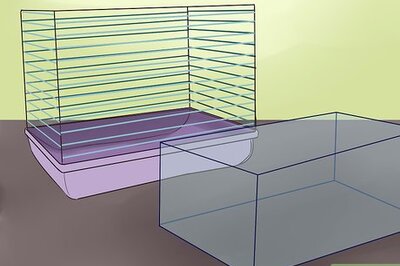









Comments
0 comment